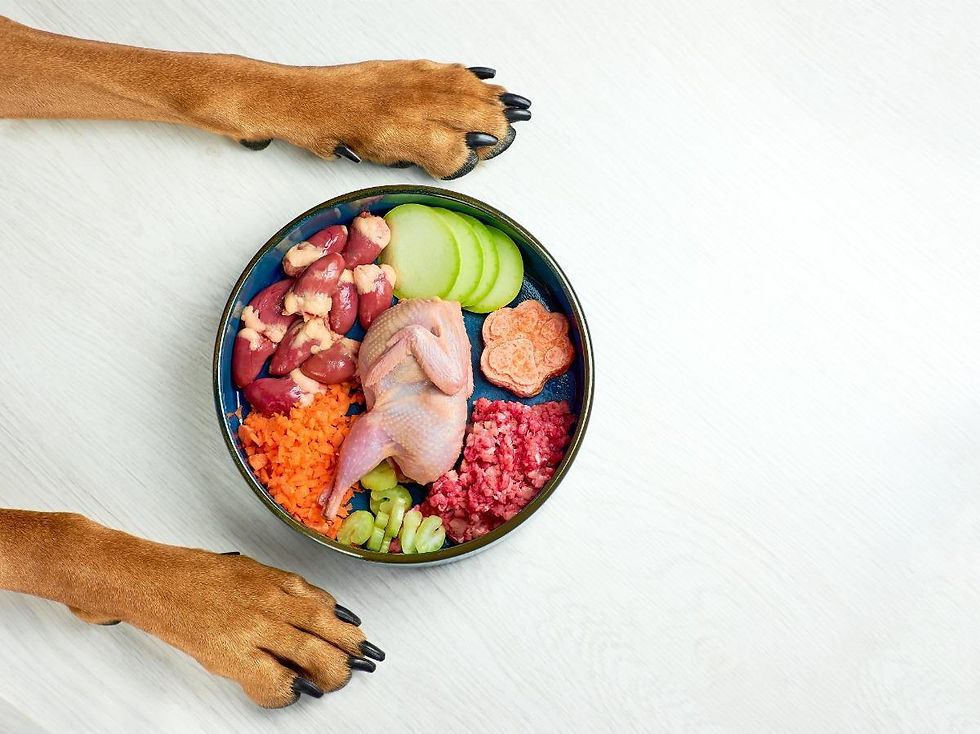The Complete Guide to Healthy Dog Food: What You Need to Know for Your Pet’s Nutrition
- tech project
- Oct 18, 2024
- 2 min read
The Complete Guide to Healthy Dog Food: What You Need to Know for Your Pet’s Nutrition
Choosing the best low-fat dog food for nutrition is one of the most important decisions for a pet owner. A balanced, nutritious diet ensures your dog stays healthy, energetic, and happy. With a variety of options on the market, from dry kibble to raw diets, finding what truly qualifies as healthy dog food can be overwhelming. Here's how to navigate the choices and provide your dog with the best pet nutrition possible.
What is Healthy Dog Food?
Healthy dog food is rich in essential nutrients. Buy high-quality proteins, healthy fats, and natural ingredients. It should be free of harmful additives, artificial preservatives, and fillers. Whether you choose dry kibble, wet food, or a raw pet food diet, the goal is to meet your dog's specific nutritional needs with high-quality ingredients.
Key Nutrients in Healthy Dog Food
Protein: Vital for muscle growth and overall health, look for dog food with chicken, beef, or fish as the first ingredient.
Fats: Essential for skin, coat, and brain health. Ingredients like fish oil and flaxseed provide beneficial omega-3 and omega-6 fatty acids.
Carbohydrates: Though not essential, carbohydrates provide energy. Opt for whole grains or grain-free dog food options like sweet potatoes or peas.
Vitamins and Minerals: Ensure your dog's food contains the right balance of vitamins (A, B, D, E, K) and minerals (calcium, zinc, phosphorus) for immune support and bone health.
Fiber: Fiber from vegetables and fruits aids digestion and helps regulate bowel movements.
Tips for Choosing the Best Diet for Dogs
Check the Ingredients: Look for high-quality dog food ingredients like real meat and avoid "meat by-products" and fillers.
Guaranteed Analysis: Review the protein, fat, and fiber content to ensure it aligns with your dog's size, breed, and age.
Consider Special Dietary Needs: Some dogs have food allergies or sensitivities. If this is the case, consider natural dog food choices or limited-ingredient diets.
Portion Control: Even with nutritional dog food, overfeeding can lead to weight issues. Follow the recommended feeding guidelines on the package.
Common Myths About Dog Food
Grain-Free is Always Better: While grain-free dog food is essential for dogs with allergies, whole grains like brown rice and oats can be healthy for many dogs.
Raw Feeding for Dogs is Best: While a raw diet can offer benefits, it also has risks such as bacterial contamination. Always consult with your vet if considering this option.
Conclusion
Providing your dog with the best pet nutrition starts with choosing high-quality food rich in proteins, healthy fats, and essential vitamins. Whether you decide to buy commercial dog food or create homemade meals, ensure it meets your dog’s specific needs. Consult with your veterinarian to ensure your dog's diet is balanced, and explore the best diet for dogs today!







Comments